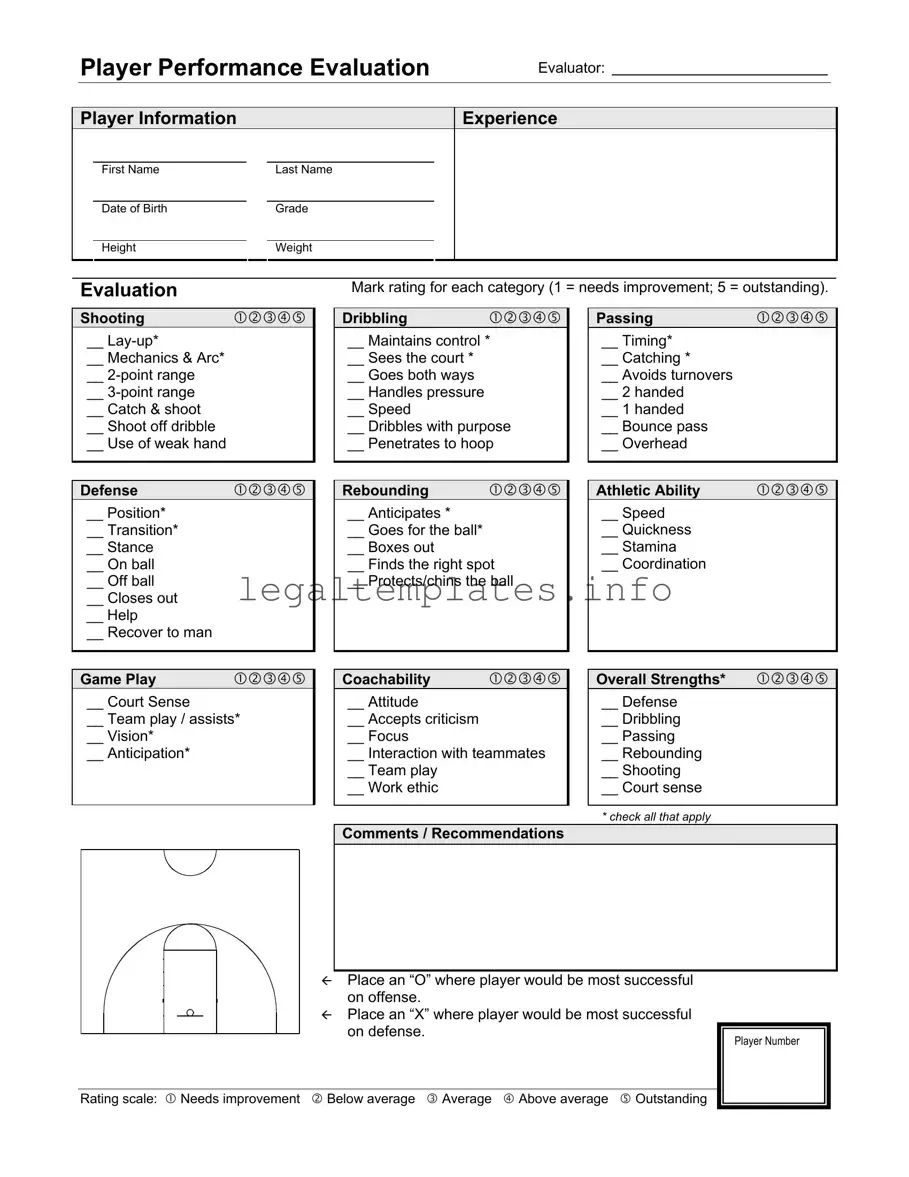The Soccer Player Evaluation form parallels the Basketball Evaluation form by assessing player performance in specific categories, such as ball control, shooting, passing, defense, and physical condition. Each player is rated on a scale, often from "needs improvement" to "outstanding," highlighting areas of strength and areas needing development. This document similarly helps coaches and players focus their training efforts more efficiently.
A Employee Performance Review, commonly used in various workplaces, shares similarities with the Basketball Evaluation form by providing a structured approach to evaluating individual performance. This review often includes ratings in areas such as work quality, teamwork, communication skills, and initiative. Recommendations for improvement and identification of strengths are key components, facilitating professional growth and development.
The Baseball Skills Assessment form bears resemblance to the Basketball Evaluation form by rating players on a range of skills pertinent to baseball, including hitting, fielding, throwing, base running, and overall game intelligence. Players receive ratings that help coaches determine their skill levels and areas needing improvement, enabling targeted training and player development strategies.
The School Physical Education Assessment form evaluates students on their physical abilities, participation, and understanding of various sports, including basketball. Similar to the Basketball Evaluation form, students are assessed in areas such as agility, coordination, sportsmanship, and knowledge of game rules. This assessment aims to encourage physical development and a healthy lifestyle among students.
The Football Performance Rating form is analogous to the Basketball Evaluation form by focusing on football-specific skills such as passing accuracy, tackling, spatial awareness, and physical endurance. Players are rated to identify strengths and potential areas for improvement, aiding coaches in strategic team placement and personalized training programs.
The Music Performance Evaluation form, while assessing a completely different set of skills, shares a fundamental similarity in providing structured feedback. Musicians are evaluated on aspects like technical proficiency, musicality, rhythm, and expression. This systematic evaluation guides improvement and skill development, akin to how sports evaluation forms aid athletes.
A Dance Skill Assessment document compares by evaluating dancers on techniques, performance quality, artistic expression, and choreography retention. Just as in sports evaluations, dancers receive feedback to highlight their strengths and areas needing improvement, supporting their artistic and technical development.
The Academic Performance Evaluation form, used in educational settings, assesses students' performance across various subjects. Similar to the Basketball Evaluation form, it utilizes a rating system to identify areas of academic strength and weakness, providing a basis for tailored support and guidance to help students achieve their educational goals.
The Swim Competency Assessment form reviews swimmers on skills such as stroke technique, breathing control, endurance, and safety knowledge. By rating these skills, coaches can offer targeted training to improve performance, very much like the targeted improvement strategies derived from a Basketball Evaluation form.
The Gymnastics Skills Evaluation form shares similarities by assessing athletes on components such as strength, flexibility, balance, and execution of routines. Gymnasts receive a detailed breakdown of their abilities, enabling coaches to design personalized training plans that cater to the individual’s development needs, echoing the purpose of the Basketball Evaluation form.

